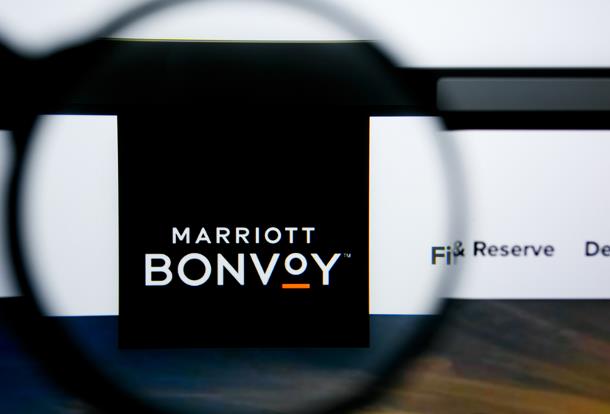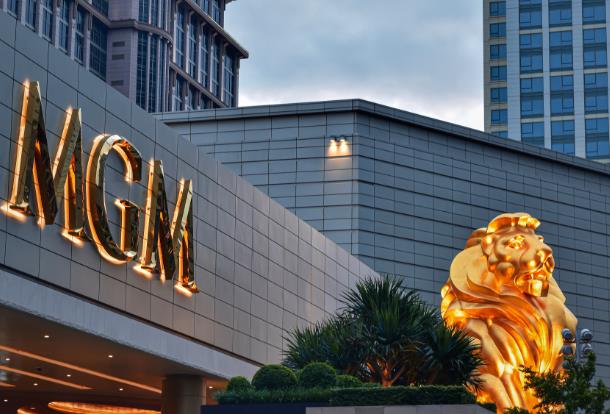Now that it appears the Marriott-Starwood merger agreement is back on, Marriott held a call for investors this morning, talking primarily about the new deal’s terms, with CEO Arne Sorenson calling in from Cuba where he is traveling with U.S. Commerce Secretary Penny Pritzker during President Obama’s historic visit.
Also included in that call were some clues as to what might happen to Starwood and Marriott, should their new deal go through and they do eventually become the world’s largest hotel company.
In short, Marriott likes the fact that Starwood has a strong group of loyal customers, many of which are affluent travelers and Millennials. And for its part, Marriott believes the strength of its group sales network, customer database, strong corporate account business, and both domestic and international mid-market accounts make its new offer an attractive one for Starwood.
Here are some highlights:
The Loyalty Programs
Initially, the Marriott Rewards and Starwood Preferred Guest loyalty programs will be in run in “a parallel way” Sorenson said. Eventually, though, both programs will be combined, although it will most likely take years for both programs to become one.
“This is one of the most profound advantages, we think, of this merger,” he said. “Longer term, we’ll look for a combined platform. We think this will generate a hotel loyalty program that truly meets everything a hotel guest would want, and we believe we can position this program so customers can conclude there’s really no other program that they need to be members of. In size, in choice, and in recognition we can provide to our guests, we think this loyalty ecosystem gives us the best tool we can possibly have to compete in the marketplace.”
The way Sorenson described it, Marriott hopes to draw on Starwood’s strength in the luxury and lifestyle space, and add it to Marriott’s strength with business travelers, corporate accounts, and group business.
“With the advantages of investing in only one platform, we expect to be able to accelerate spending not just on the infrastructure but on tools that allow us get to know our customers better, and to personalize our relationships with them. And of course, a strong program will open up more partnership opportunities, including with our great credit card partners, including co-branded credit card partners.”
That last mention of co-branded credit partners could mean good news for Chase, Marriott’s co-branded credit card partner, but bad news for American Express, Starwood’s credit card partner.
Sorenson later said, about SPG, that it “is a powerful program,” acknowledging its strong brand loyalty. “It has a strong group of loyalists who like the brand and the way Starwood treats them when they travel.” But with Marriott hotels added to the mix in a combined loyalty program, Sorenson said those SPG loyalists will have more properties with which to earn points and rewards, and for Marriott to take in a greater share of the market overall.
“Too often, they don’t have a Starwood hotel they can stay in, in some places,” Sorenson said. “By pulling these two programs together over time, and finding some connectivity even sooner that that, we hope those SPG guests find more places where they can stay to earn points.”
About Those Brands
Since November, Marriott has been tight-lipped about what will happen exactly to the 30 brands that would be amassed in the merger with Starwood, but today’s call gave a bit of a glimpse into what Marriott thinks of a few of Starwood’s brands in particular. Who’s safe? St. Regis, W Hotels, Element, and Aloft seem to be, but the jury’s still out with regard to the others.
There’s room at the inn for St. Regis. “As we look forward, we think St. Regis will be a brand that will continue to grow, and will probably see its growth accelerate. It can be positioned in a place that is distinct from Ritz-Carlton, and it can be another brand we can use in the fast growing luxury tiers around the world, especially in Asia,” said Sorenson. Given the record global growth its Ritz-Carlton brand has achieved over the past five years, Marriott believes it can “bring that growth to St. Regis in the luxury space,” he said.
The jury’s still out, but it’s likely Starwood’s The Luxury Collection might be rolled into Marriott’s Autograph Collection. “We look at what’s happened at [Starwood’s] The Luxury Collection and compare that to our launch of the Autograph Collection just about five years ago — a brand which already has 100 hotels — and we think we can bring that similar kind of growth to The Luxury Collection,” Sorenson said.
The Luxury Collection made historic news this weekend, when Starwood became the first U.S. hotel company to do business in Cuba in nearly 60 years. Two of Starwood’s three new properties in Cuba, all of which will be conversions of Cuban state-owned hotels, are set to be reflagged as members of The Luxury Collection of independent properties.
It’ll be interesting to see how the owners of the Hotel Inglaterra and Hotel Santa Isabel respond to news that Marriott may or may not roll The Luxury Collection into its own Autograph Collection, if Marriott successfully buys Starwood. Or, it could be suggested that those owners may have been persuaded to sign deals with Starwood, under the assumption that Marriott and Starwood would eventually merge in June, making them the largest hotel company in the world— and one with a much more sizable customer base. Like Starwood, Marriott also received approval from the U.S. and Cuban governments to do business in Cuba over the weekend.
W Hotels: It’s not as luxurious as Edition, but we’ll keep it. Sorenson said, “W is a brand with great momentum and great customer awareness and connectivity. We very much expect to continue to see it grow. It is a very very strong brand with many luxury hotels across the world, but generally we would expect to position it just a little bit below Edition. Obviously, W is a bigger brand than Edition, and we continue to see it grow.”
Element: Could this be Marriott-Starwood’s weapon against Airbnb and HomeAway? “With Element, we have a lifestyle extended stay brand which is a space where Marriott has no brands,” Sorenson said. “We think that as a consequence, this will be a brand that we think will grow quite quickly post merger. We also think Element could be an interesting alternative to some of the housing rental services or shared economy platforms like Airbnrb and some others.”
AC by Marriott and Aloft: Same same but different. “Both brands compete in the upscale space. Both we would describe as lifestyle entrants into that space. Both have meaningful momentum. But while they are positioned, in some respects, similar arrangement of the segment, they have different personalities. We tend to think of AC hotels as being a more of a European lifestyle approach, and Aloft as being a bit more of a western lifestyle approach. We think their customers that are drawn to each of the two as there will be owners and franchisers that are drawn to each of the two,” Sorenson said.
With record numbers from Marriott’s North American Select Service Development team, which saw more than 50,000 signed rooms last year, Marriott is also confident it could position Starwood’s Aloft and Element brands in the lifestyle sector for select-service properties.
What will happen to Sheraton? Marriott likes what Starwood did last year, launching Sheraton 2020, but noted that, post-merger, some of its hotels may have to be rebranded or de-flagged.
” … We’ve been asked about Sheraton a number of times, and it’s of particular interest,” said Sorenson. “As it relates to Sheraton, we are encouraged by the 10-point plan that Starwood put together last year. We think that there are great tools in that to begin to drive a stronger brand with more momentum for Sheraton. We think that generally the revenue lift and cost savings we talked about should improve brand economics for our hotel owners.”
He also said, “We’re optimistic that more renovation capital can be encouraged to improve the performance of these hotels, while at the same time recognizing that some of the hotels which are pulling the brand back, and over time may have to be de-flagged as Sheratons. Those are important conversations to have with owners and franchisees … but I think with the long-term process we are optimistic that this is a space we’ve been in before with our owners and we can craft a plan which is very much to their benefit and to the benefit of the brand long term.”
About Those Synergies
When Starwood and Marriott first agreed to a merger in November 2015, they estimated that the combined synergies, or cost savings, that the two companies would have together would be $200 million. With today’s newly revised bid, those synergies have risen to $250 million, and Marriott expects them to be fully achieved within two years after closing.
Where did that extra $50 million come from? We’re not exactly sure. An analyst, Tom Allen from Morgan Stanley, prodded Marriott for more information on that very topic during the investors call this morning, but the response he received wasn’t very elucidating. That $250 million number is still an estimate, and not a definite, too, until the deal finally closes.
What does seem likely, however, is that Marriott will continue with its original plans to start cutting jobs at the top level, and that it will continue to proceed with its asset-light strategy, selling off some of Starwood’s $4 billion in prime real estate.
Needless to say, this story is a developing one. It’ll be interesting to see if Anbang’s consortium comes roaring back with yet another attractive takeover bid and, if it does, and Starwood eventually sells to Anbang, we may never quite know what would have happened with the combined Marriott-Starwood entity.
Read original article




